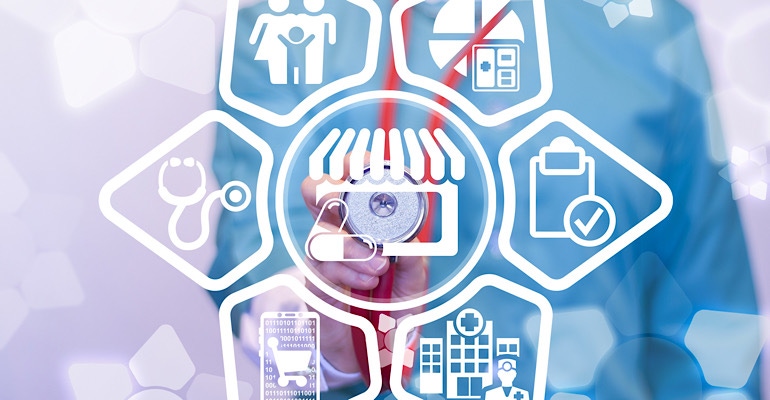Happify’s Latest Milestone Shows PDTs are in Hot Demand
Happify Health has launched the Ensemble prescription digital therapeutic for the treatment of patients who have Major Depressive Disorder or Generalized Anxiety Disorder.
July 26, 2021

Happify Health is targeting major depressive disorders (MDD) and generalized anxiety disorders (GAD) with its latest prescription digital therapeutic (PDT) offering.
The New York-based company said Ensemble is designed as an adjunct for care to MDD and GAD. The PDT is accessible through smartphones or computers and teaches patients new skills and habits to take control of their anxiety and depression.
“The product is composed of 112 neurotherapeutic interventions,” Chris Wasden, Head of Happyify, told MD+DI. “What that means is they are cognitive behavior therapy, mindfulness, and positive psychology-based, and the patients will complete two of these per day. Each one takes roughly 10 to 15 minutes to complete, so the patients will be conducting about 15 to 30 minutes of activities per day that are similar to the ones they would get if they went to a psychologist’s office.”
Ensemble’s techniques and activities are sequenced to achieve the desired outcome, with the ability to measure patient mental health improvement and outcomes using clinically validated instruments (PHQ-9 and GAD-7). Ensemble includes a physician dashboard for patient monitoring and uses the science of engagement to increase patient adherence.
He added, “part of the issue with going to psychotherapy is it’s a large commitment. You have to take time off from work. It’s easily a two-to-three-hour commitment – and that’s just to do one session. Whereas at the end of 3 hours and 30 minutes for our intervention you can do about six of those types of interventions. What you find in the normal world – because of the significantly greater burden on the patient to get these interventions done, you have a very low completion rate.”
The Ensemble PDT has its roots in a policy FDA announced in April 2020 that would expand the availability of digital health therapeutic devices for psychiatric disorders to facilitate consumer and patient use while reducing user and healthcare provider contact and potential exposure to COVID-19 during the pandemic.
“We decided to use that market authorization to bring a product to market that has not yet been cleared by FDA,” Wasden said. “We would then gather data from the use of our product for hundreds of patients so we could use that in an FDA filing.”
The Growing PDT Market
The PDT space is set to have a market growth rate of 11.2% in the forecast period of 2021 and 2028, according to a report from Data Bridge Market Research.
Livongo and Pear Therapeutics are examples of quickly rising companies in the space.
Mountain View, CA-based Livongo was acquired by Teladoc for $18.5 billion, in one of the largest medtech deals of 2020. The company has developed a data-based health coaching program that enables people with diabetes to share blood glucose records with Certified Diabetes Educators.
Boston, MA-based Pear Therapeutics went public through a Special Purpose Acquisition Corporation Merger with Thimble Point Acquisition Corp. in June. Pear was founded in 2013 and has three FDA-cleared prescription digital therapeutic (PDT) products - reSET and reSET-O, and Somryst.
Wasden said the market grew because of the emergence of consumer demand in healthcare and the smartphone.
“Since the iPhone came out in 2007 is when you had the emergence of more mobile therapies,” he said. “We’re roughly 14 years later and FDA has provided clear guidelines for what you need to do to do to become a cleared PDT. Some payors have now agreed they will pay for these [PDTs]. You have a broad-based acceptance among the patient community that these (PDTs) can be effective, largely driven by the fact that in every other part of a patient’s life they have digital experiences. You do all your banking through your phone, you do all your Amazon purchases through your phone, you read your newspaper, you have all your media through your phone. About the only thing you don’t do through your phone is your healthcare. So, consumers are saying is why can’t healthcare be through my phone like every other aspect of my life is through my phone.”
About the Author(s)
You May Also Like



.png?width=300&auto=webp&quality=80&disable=upscale)
